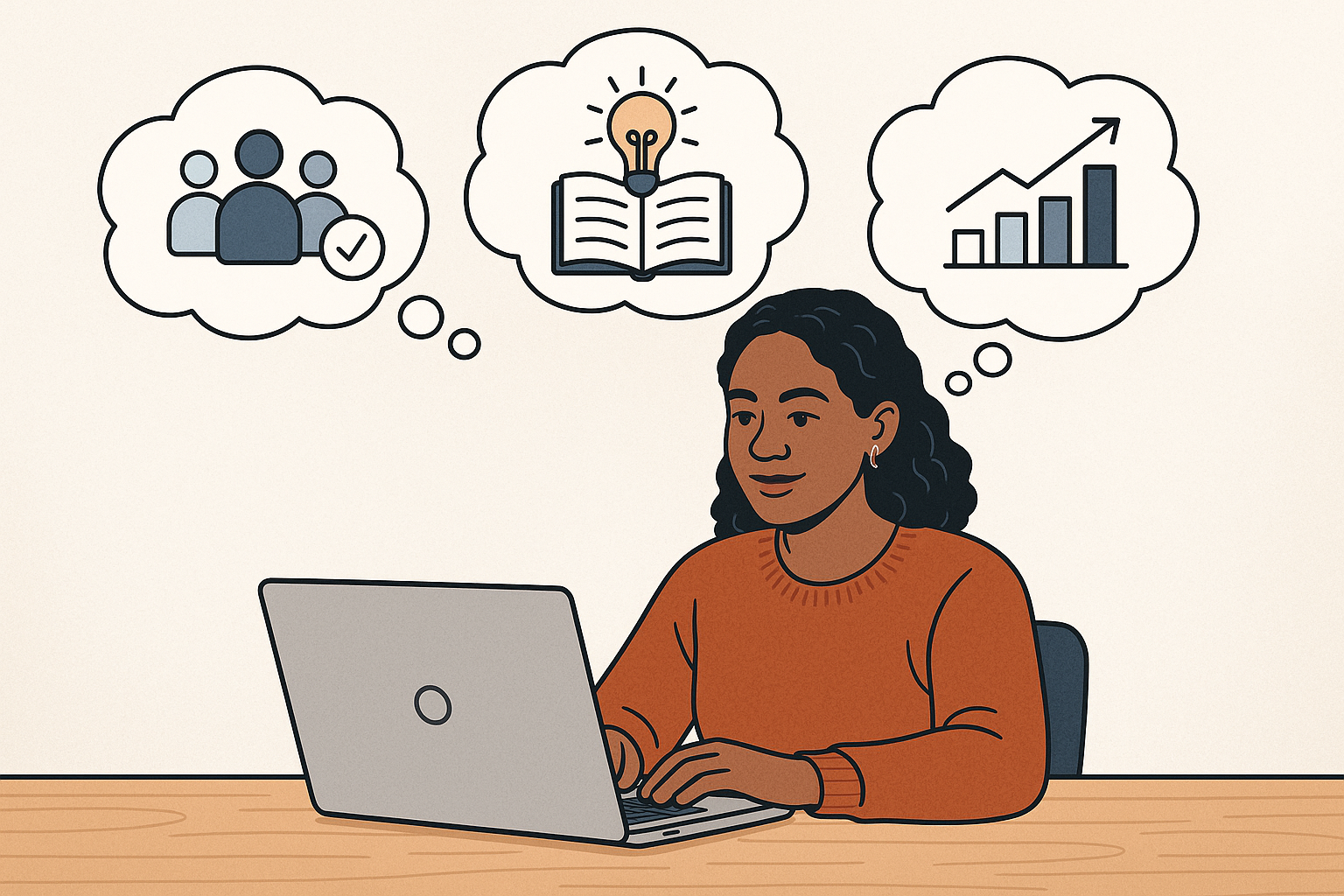Finding Your Niche Part 1: Focusing Expertise in Instructional Design

Most of us who work as instructional designers didn’t dream of this career path when we were kids. Many of us thought of being teachers, but there are a few members of the Learning Services ID team who came from somewhere other than the classroom: one from Lululemon (seriously. Yes, we all asked her how she could possibly give up her company discount!), another from the cab of a long-distance trucker position.
What we all have in common as instructional designers is an appreciation for curriculum and assessment design. That means understanding how scope, sequence, and alignment create a logical learning flow. It’s about crafting authentic assessments that measure real skills. This foundation is what separates engaging, effective learning from content that simply fills time.
Beyond that, there are too many areas of specialization for every ID to be a jack-of-all-trades. Here are three basic lenses through which you can view the instructional design role.
Inclusive Approach: Inclusion is more than compliance; it’s core to good design. Applying Universal Design for Learning (UDL) principles means offering multiple ways for learners to engage, access content, and show understanding. Accessibility practices like captions, alt text, and high-contrast visuals ensure everyone can participate fully. Embedding DEIB values (diverse perspectives, equitable examples, and authentic representation) strengthens learning and signals to all learners that they belong. Expertise here is increasingly vital and deeply rewarding.
Creative Approach: Creativity transforms learning from information into experience. Storytelling, gamified elements, and scenario-based learning give context and meaning to concepts. Interactivity builds ownership and curiosity. Learners don’t just consume content; they do something with it. Creative IDs use design thinking, cognitive psychology, and empathy to make learning memorable. Whether it’s an immersive branching scenario or a microlearning challenge, creativity isn’t fluff; it’s how engagement and understanding connect.
Business Approach: Instructional design also lives at the intersection of learning and business goals. Building expertise in analytics, evaluation, and performance consulting can elevate your impact. Data reveals what’s working (and what’s not) so you can make informed design decisions. By speaking both the language of learning and the language of results, you strengthen your credibility and influence within any organization.
Knowing which of these approaches best suits your skills and preferences allows you to position yourself as a specialist within the basic role of an instructional designer. You could pursue microcredentials or certifications related to your chosen area of focus, which will help you build a portfolio that shows the depth of your skill and enhances your professional value. In a field as wide as instructional design, your expertise is both your compass and your contribution.
There’s a sequel to this post (you get to decide if it’s like The Godfather and part 2 is better than part 1 or if it’s like Grease 2, which if you are fortunate, you’ve never seen). Finding Your Niche Part 2 discusses adjacent roles, like graphics designers, media developers and programmers, and how an ID can lean into these roles.
Want to Learn More? Connect with your institute's D2L Customer Success Manager or Client Sales Executive, or reach out to the D2L Sales Team for more information about how Learning Services can support you on your learning journey.
